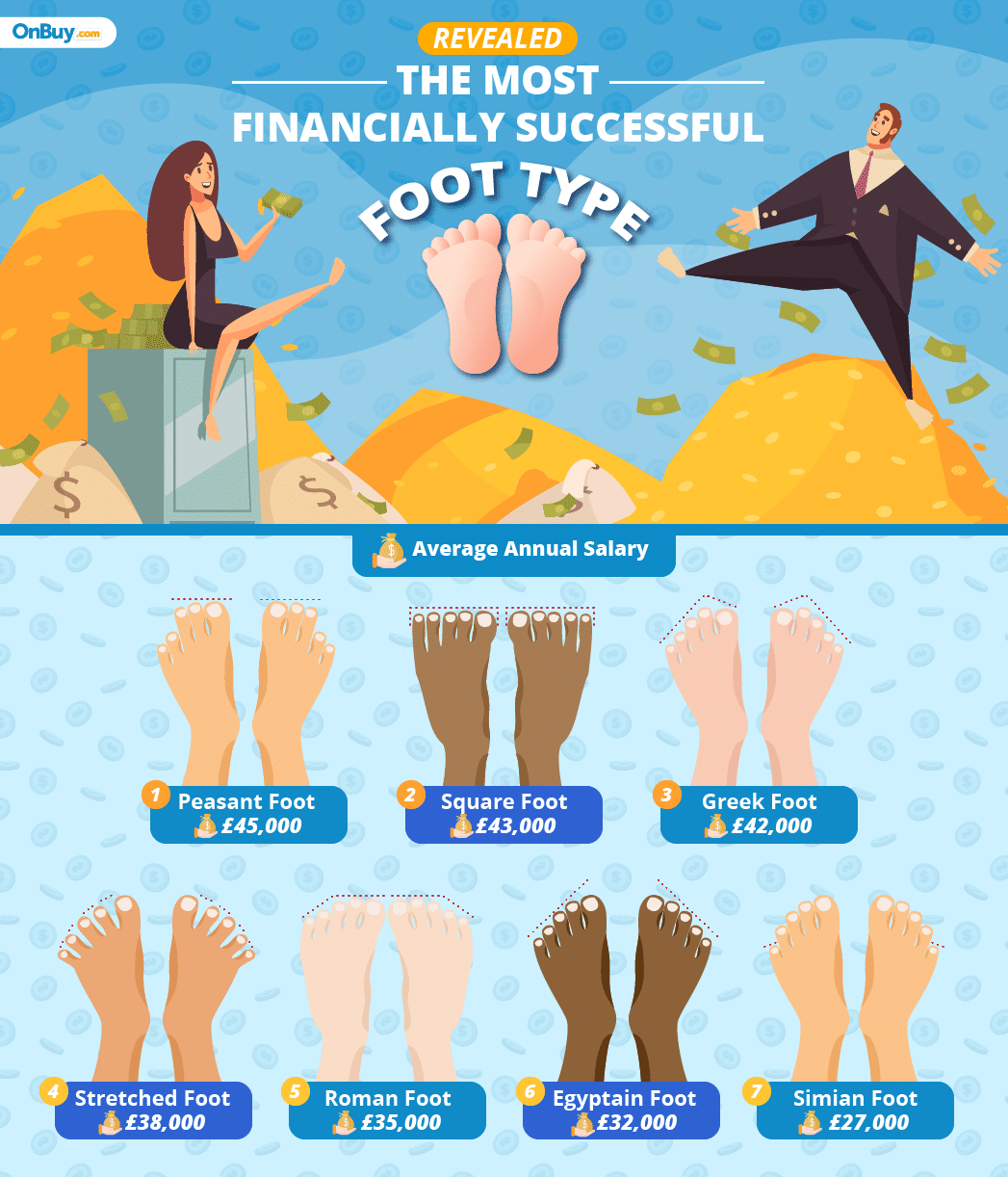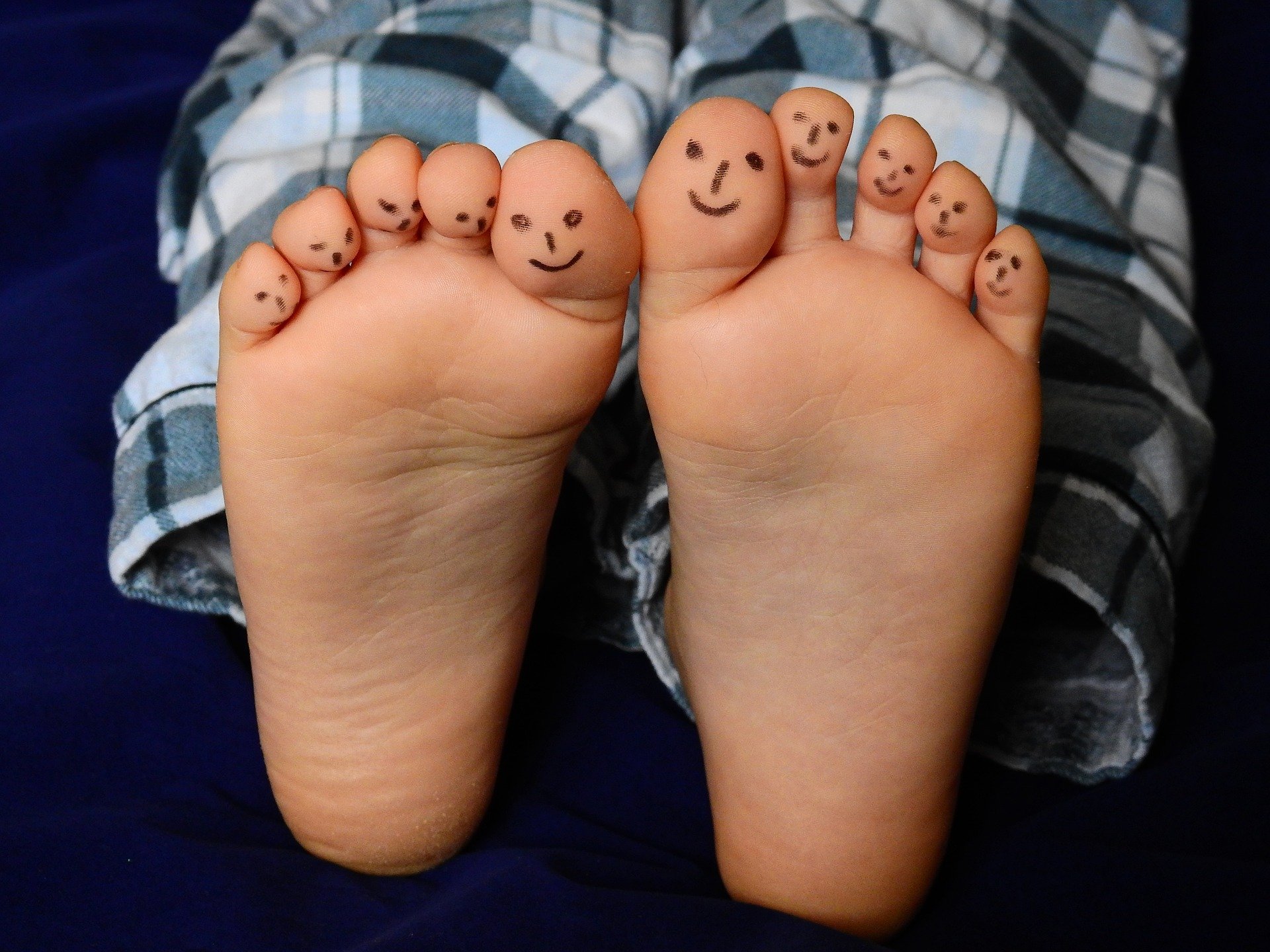Could your feet be an extra source of revenue? The notion that your toes can talk money—just picked up unexpected credibility thanks to a survey of 5,468 Brits by OnBuy.com’s Shoe Department.
Their findings suggest that the architecture of your foot may nudge feet income up or down more than a few pay grades.
Peasant Feet: Three-Toe Royalty

First across the finish line is the elusive peasant foot, where the middle trio of toes share the same height.
Average haul? An impressive £45,000—about 15 percent above the UK norm. CEO Cas Paton credits that boost to: “People with a peasant foot are known for their strategic thinking and consistency – meticulously contemplating the pros and cons for both big and small decisions. These qualities allow for consistent and positive career growth, contributing to their financial success.”
Symmetry, it seems, isn’t just easy on the eyes; it’s easy on the overdraft.
Square Feet: Adaptable and Advantageous
Next up, the square foot—all five digits marching in orderly formation—logs a tidy £43,000. Paton explains: “People with square feet are typically eager to seize every opportunity without hesitation – this adaptability and determination are key when looking for professional and financial growth.”
Their secret? A willingness to jump first and spreadsheet later—a mindset that can turn risk into feet income rather quickly.
Greek (Flame) Feet: Wanderlust Over Wages
Owners of the dramatic Greek foot, where the second toe spearheads the formation, clock in at £42,000. Paton notes: “Despite being known for their hard work, those with widely separated toes are commonly driven by personal pursuits as opposed to their career and financial success.
Also known as the traveller’s foot, those with this foot type typically want to explore the world and learn about themselves – this is arguably why they are not amongst the highest earners.”
Translation: they’d rather fund a round-the-world rail pass than a pension—yet still out-earn much of the field.
Roman & Egyptian Feet: Pretty but Prudent
The inward-pointing Roman foot delivers around £35,000, while the tapering Egyptian foot manages £32,000. Paton suggests Roman-footed folks:
“Are known to be cautious people so, much unlike those with square feet, sometimes too afraid to jump at opportunities, stalling their professional progression and subsequently their salary.”
Egyptian-footed dreamers may be busy building pyramid-sized Pinterest boards instead of climbing pay scales.
Simian Feet: Mighty Grip, Modest Wallet
Bringing up the rear is the Simian foot, identified by a shy little toe and an inward-leaning big one, averaging £27,000. Paton believes their strong presence can be offset by an allergy to high-stress roles.
Fetish to Finance—One Small Step for your Bank Balance
Sceptics might file this under pedicurist pseudoscience, yet the playful numbers could inspire side hustles: premium toe pics already fetch tidy tips in certain online communities, adding a whole new angle to feet income.
So the next time you kick off your shoes, give those toes a respectful nod—or a cheeky photoshoot. Whether they’re planning your promotion or your Patreon tier, they might know more about your prosperity than your financial adviser ever will.





